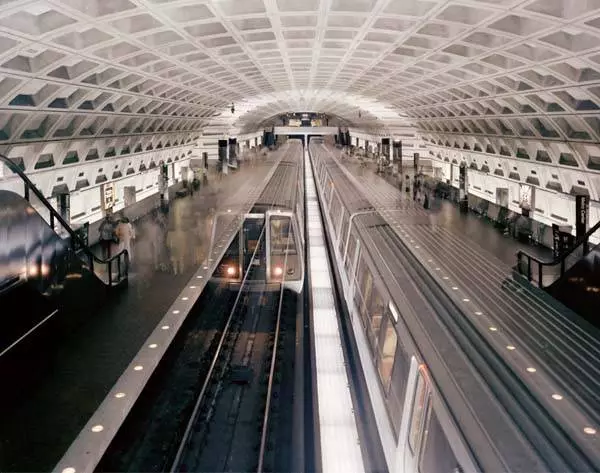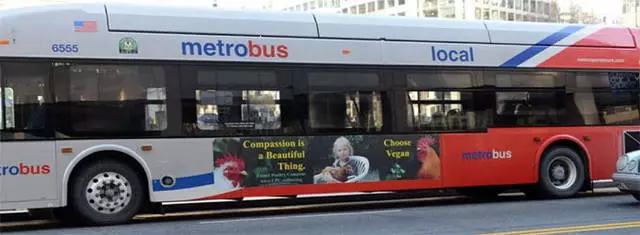The public transport system in the capital of the United States is very developed. It is mainly implied by the metro systems and bus transport, but it is also worth noting the rental of bicycles.
The System of the Washington Metro is very extended, and the download rate is the second after being located in New York. As for the buses, this transport system is also established remarkably, on buses you can get around the city, and beyond. A lot of good development received a bicycle rental service - there are many relevant items in the city. You can take a bike for a different period - at least for a day, at least five, even for a year, if you wish.
In the current Washington roads have a wonderful coating. In whatever time you do not leave, cars will always be very much - because most of the population has its own cars, so that the need for public transport in general is small. The visitors have the opportunity to rent a car - for a very affordable cost.
Metro
The system of the metro in the capital has five branches. They, so to speak, "color" - there is a "red", "yellow", "orange", "green" and "blue". They also plan to launch the sixth - "silver", at this time there is its construction, work is leaving with a delay in graphics.
The peculiarity of the metro in Washington is that the branches go from the suburbs, the intersection occurs in the central part of the capital. Officially there are nine transplant stations, there is also a transfer opportunity for some more on some. One of these - L 'Enfant Plaza, it is located close to the main museums, four branches are intersecting here; Gallery Place - Chinatown - Located next to the National Museum of American Art, three metro lines are intersecting here; Metro Center is close to the White House. From one of the last two stations to another, you can walk in five minutes, the L 'Enfant Plaza station is removed from them to a distance of one kilometer.

Interval of movement of compositions - about fifteen minutes. To get acquainted with the schedule of movement, the lines card and other useful information can be near the entrance to the subway - on the information booth, or by talking to the station duty officer.
In the rush hour, the intensity of trains traffic is increasing. Even additional wagons add, but it often does not bring a tangible result. For example, in the evening in the peak hours in the center of the capital, it is extremely difficult to turn on the train. At regular time - another thing. It is useful to remember such a characteristic feature: in the Washington Metro, trains from two different branches stop at most of the stations - so when landing is worth making sure that this train is from the line that you need. You can learn about this in the color of the first and last wagons. In addition, in any of the cars you can see the visual information of the final station of this train. Such a solution allows passengers to enjoy different subway branches without the need for transplant.
The metro, no doubt, is a very fast view of transport in the capital. The average duration of trips is no more than 15-20 minutes. From one suburbs can be reached in an hour. However, the subway can not get to all areas. This drawback is compensated by the bus transportation system.
Metro's work schedule: on weekdays - from 05:00, in the weekend - from 07:00; Completion of work - at midnight - from Monday to Thursday and on Sunday, on Friday and Saturday the same metro is open until 03:00. Remember that the latest formulations are sent from end stations 30 minutes before the end of the metro is the schedule.
As for the cost of travel, it can be different (the same applies to both buses), depending on the time of day and day of the week. On weekdays until 09:30 and from 15:00 to 19:00, as well as in the weekend from 24:00, the passage will cost from $ 2.20 to $ 5.75 at another time - from 1.70 to 3.50.
It is also worth noting that by purchasing a regular ticket, you will need to pay one dollar. If you use a non-contact SmartTrip card, such a surcharge is not required. This card is ordered on the "Transport Management of Washington Agglomeration" website https://smartrip.wmata.com/storefront . In addition, during transfers from buses on the subway trains and a passenger back, having such a card, pays less.
There are also various travel for an unlimited number of trips. Conventional sold in automata. On the card, which was previously discussed, you can add through the site above.
The passage for one day costs $ 14, a week - 57.50 (for those who have a SmartTrip card), for a week for short trips - 35 (when the standard cost is exceeded by $ 3.50, additional funds are removed from the card or, in the case of The usual travel is paid in the EXITFARE machine). Direct 28 days cost 230 dollars (only for those who have a Smart Trip card).
Buses
Many buses go to Washington - comfortable, with air conditioning and comfortable seats. Payment of travel is made directly to the driver. Control of traffic belongs to the metrobas company - it controls 176 US capital routes.

Bus traffic interval is more than that of the metro compositions - however, the problem of passenger transportation is solved quite successfully. There are two species buses on the lines - ordinary and expressions.
The fare is 1.60 dollars (for the owners of the SmartTrip card) and 1.80 - the usual price. As for expressings, for those who have a Smart TRIP card, the cost will be $ 3.65, for the rest - $ 4. From May 2006, DC Circulator, resembling route taxis, began to ride. The price of travel here is one dollar.

Buses are often used during long-distance transport. This transport is very convenient for passengers, here and comfortable sites, and the volume of luggage departments is solid. As for the cost of the passage, it does not differ on weekdays and on weekends. However, you can easily save - if you book a ticket ahead of time. On weekdays, it can be saved about 40% of the cost of travel.
